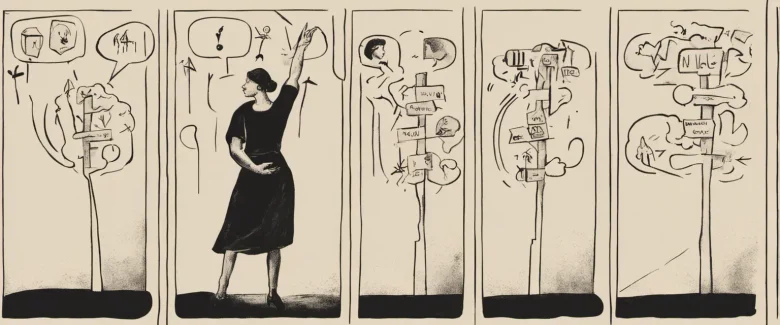In the captivating book “Gut,” Giulia Enders takes readers on a fascinating journey into the world of the digestive system, revealing its crucial role in our overall well-being. With her compelling blend of scientific expertise and humor, Enders unlocks the secrets of the gut, offering valuable insights into the inner workings of our bodies. As a medical doctor and researcher, Giulia Enders possesses a deep passion for the human body and its intricate systems. Her remarkable ability to communicate complex scientific concepts in a relatable manner has made her an acclaimed author and presenter.
Chapter 1: Introduction to the Gut
Chapter 1 of “Gut” by Giulia Enders, titled “Introduction to the Gut,” provides readers with a comprehensive overview of the digestive system, its functions, and its significance in overall health. Enders begins by emphasizing the gut’s importance, explaining that it not only processes food but also plays a crucial role in the immune system and hormonal regulation.
The author introduces the hierarchy of the gut, highlighting the fundamental structure and function of the various sections, including the esophagus, stomach, small intestine, and large intestine. Enders addresses the significance of the gut flora, the community of microorganisms residing in the digestive tract. She highlights the symbiotic relationship between these microorganisms and the host, explaining how they aid digestion, produce essential vitamins, and regulate the immune system.
Furthermore, Enders delves into the intricacies of gut-brain communication, describing the extensive network of nerves that connect the gut and the brain. She explains the phenomenon of a “gut feeling” and how these connections impact emotions, mental well-being, and even decision-making.
Throughout the chapter, Enders provides fascinating insights and anecdotes, making the subject matter accessible to readers of all backgrounds. She emphasizes the importance of maintaining a healthy gut through wholesome eating habits, stress management, and proper hygiene.
Overall, Chapter 1 of “Gut” serves as a comprehensive introduction to the digestive system, enlightening readers about the intricate processes occurring within the gut and emphasizing its vital role in maintaining overall health and well-being.
Chapter 2: The Digestive Process
Chapter 2 of the book “Gut” by Giulia Enders dives into the intricate process of digestion. Enders explains how our journey of food digestion begins as soon as we start chewing our food. Chewing breaks down food particles into smaller pieces, creating more surface area for enzymes in our saliva to begin breaking down carbohydrates.
Once we swallow, food travels down the esophagus through peristalsis, a process of coordinated muscle contractions that push the food towards the stomach. Enders emphasizes the importance of relaxed and unhurried eating, as stress and rush can negatively affect the digestive process.
In the stomach, food is mixed with powerful gastric acid and churned by the stomach muscles, turning it into a semi-liquid substance called chyme. The stomach acts as a storage organ for food, slowly releasing small amounts into the small intestine as it gets broken down further.
Next, the small intestine takes over the crucial task of absorbing nutrients from the chyme. Its inner surface is covered with tiny finger-like projections called villi, which increase the surface area for nutrient absorption. The small intestine is assisted by various digestive enzymes, bile from the liver, and hormones that regulate digestion.
The large intestine, or colon, follows, where water and electrolytes are absorbed, and the remaining undigested and unabsorbed material is formed into feces. The colon houses trillions of beneficial bacteria that assist in the fermentation of undigested carbohydrates and production of vitamins.
Enders highlights the importance of a healthy gut microbiome, as imbalances can lead to digestive issues and other health problems. The chapter concludes by mentioning the role of the brain-gut connection, where our mental and emotional states can impact our digestive processes, highlighting the significance of mindful eating and stress reduction.
Overall, Chapter 2 delves into the sophisticated process of food digestion, highlighting the importance of proper chewing, relaxed eating, and the role of the different sections of the digestive system in extracting nutrients and maintaining overall well-being.
Chapter 3: The Gut’s Microbiota
In Chapter 3 of the book “Gut” by Giulia Enders, titled “The Gut’s Microbiota,” the focus is on the complex, diverse, and immensely important community of microorganisms that inhabit our gastrointestinal tract. These microorganisms, collectively known as the gut microbiota, play a crucial role in our overall health and well-being.
Enders starts by highlighting the sheer number and variety of bacteria residing within our gut, which is estimated to be around 100 trillion individuals, representing thousands of different species. She emphasizes that a majority of these bacteria are beneficial, assisting in various digestive processes such as breaking down complex carbohydrates, fiber, and producing essential nutrients like vitamins B and K.
The gut microbiota also helps protect the body by competing with harmful bacteria, strengthening the immune system, and aiding in the proper functioning of the intestinal barrier. Imbalances in the microbiota have been linked to several health conditions, including obesity, allergies, and inflammatory bowel diseases.
Enders explores the factors that shape our gut microbiota, including genetics, diet, stress, and the mode of delivery during childbirth. She reveals that the first few years of life are particularly critical, as the type of bacteria that establish themselves during this period can have long-lasting effects on health.
To maintain a healthy gut microbiota, Enders suggests consuming a diverse and fiber-rich diet, reducing stress, avoiding unnecessary antibiotics, and considering probiotic and prebiotic supplements. She also delves into fascinating topics such as fecal microbiota transplantation, which involves transferring healthy gut bacteria to treat certain diseases.
Overall, Chapter 3 highlights the immense complexity and significance of the gut microbiota in maintaining our health and offers practical insights into nurturing and preserving this vital microbial community.

Chapter 4: The Gut-Brain Connection
Chapter 4: The Gut-Brain Connection of the book “Gut” by Giulia Enders discusses the intricate relationship between the gut and the brain and how they communicate with each other.
The chapter begins by introducing the Enteric Nervous System (ENS), often referred to as the “second brain,” which houses billions of neurons in the walls of the gut. The ENS controls digestion and communicates with the brain through various routes, including the vagus nerve. This connection allows the gut to send messages to the brain about its well-being, such as hunger or discomfort.
Enders discusses the important role of serotonin, a neurotransmitter primarily associated with mood regulation, in the gut-brain communication. Surprisingly, the majority of serotonin in our bodies is produced by cells in the gut. The gut’s influence on serotonin levels means that disturbances in gut health can affect mental well-being, potentially leading to conditions like depression and anxiety.
Furthermore, the chapter explores the influence of stress on the gut and its subsequent effects on the brain. Chronic stress can disrupt the balance of gut bacteria, promoting the growth of harmful microbes. This imbalance can then lead to inflammation, which can increase the risk of brain-related disorders like Alzheimer’s disease.
Enders also highlights the role of the gut microbiome in this connection. The gut microbiota, composed of trillions of microorganisms, interacts with the gut and impacts brain function. Studies have shown that certain gut bacteria produce substances that affect brain chemistry and behavior.
Overall, Chapter 4 emphasizes the bidirectional communication between the gut and brain and emphasizes the importance of maintaining gut health for mental well-being.
Chapter 5: Food and the Gut
Chapter 5: Food and the Gut of the book “Gut” by Giulia Enders dives into the complex relationship between the food we consume and its impact on our gut. The chapter explores various stages of digestion and how different foods can affect our gut health.
The chapter begins by discussing the importance of chewing, which is often overlooked but plays a crucial role in the digestive process. Chewing breaks down food into smaller pieces, making it easier for enzymes to break it down further in the stomach and intestines. It also helps in releasing saliva, which contains digestive enzymes that start the breakdown of carbohydrates.
Enders then delves into the stomach, explaining its function as a blender for food and highlighting the significance of stomach acid. The stomach acid helps in killing off any harmful bacteria that might have been present in the food, further emphasizing the crucial role our gut plays in our overall health.
Moving further down the digestive system, the chapter explores the small intestine, where nutrient absorption takes place. It emphasizes the importance of a healthy gut lining, which acts as a filter to absorb nutrients and prevent harmful substances from entering our bloodstream.
The chapter also touches upon the role of fiber in our diet, which is essential for a healthy gut. Fiber adds bulk to the stool, promoting regular bowel movements, and acts as a prebiotic, providing nourishment to beneficial gut bacteria. Enders discusses various sources of dietary fiber and the importance of incorporating them into our meals.
In conclusion, Chapter 5 gives readers an in-depth understanding of the journey food takes through our digestive system. It highlights the significance of chewing, stomach acid, gut lining, and the role of fiber in maintaining a healthy gut. Understanding these processes empowers readers to make informed food choices that can positively impact their gut health.
Chapter 6: Digestive Disorders and Diseases
Chapter 6 of the book “Gut” by Giulia Enders discusses various digestive disorders and diseases that can affect the gastrointestinal system. In this chapter, Enders provides a comprehensive overview of these conditions, their causes, symptoms, and potential remedies.
The chapter begins by explaining the importance of a healthy gut and the role it plays in maintaining overall well-being. Enders emphasizes that an imbalanced gut flora can lead to several disorders such as irritable bowel syndrome (IBS), Crohn’s disease, and ulcerative colitis.
Enders then delves into the details of each disorder, starting with IBS. She explains that IBS is a chronic condition characterized by abdominal pain, bloating, and irregular bowel movements. Enders highlights the impact of stress, diet, and gut bacteria on IBS and suggests managing stress and making dietary adjustments to alleviate symptoms.
Moving on, she discusses celiac disease, an autoimmune disorder triggered by gluten consumption. Enders explains how the immune system reacts to gluten, leading to damage in the small intestine. She recommends a gluten-free diet as the primary treatment for those with celiac disease.
Next, Enders delves into inflammatory bowel diseases (IBDs) like Crohn’s disease and ulcerative colitis, explaining their distinct characteristics and their impact on the gut. She discusses the potential causes of these diseases, including genetic factors and an imbalanced immune response. Enders also touches upon the available treatment options, ranging from medication to surgical interventions.
Finally, Enders explores the role of the gut in mental health, discussing the gut-brain axis and how certain gut disorders can affect mental well-being. She mentions the correlation between gut health and conditions like depression and anxiety, highlighting the importance of a healthy digestion system for overall mental wellness.
In summary, Chapter 6 of “Gut” covers various digestive disorders and diseases, ranging from IBS to celiac disease and IBDs. Enders provides valuable insights into the causes, symptoms, and potential remedies for these conditions, emphasizing the significance of maintaining a healthy gut for both physical and mental health.

Chapter 7: Nurturing a Healthy Gut
Chapter 7: Nurturing a Healthy Gut of the book “Gut” by Giulia Enders focuses on the various ways to promote a healthy gut microbiome for overall well-being.
Enders starts by discussing the importance of a balanced diet and how it directly affects the gut. A diverse range of plant-based foods introduces a wide array of nutrients that feed different gut bacteria. Moreover, she emphasizes the significance of fermented foods like yogurt, sauerkraut, and kefir, as they provide beneficial bacteria to the gut.
The author introduces the concept of prebiotics, fibers that nourish the good gut bacteria. These prebiotics can be found in foods such as garlic, onions, and artichokes. Enders also advises against excessive antibiotic use, as it can disrupt the delicate gut ecosystem by killing both harmful and beneficial bacteria.
Additionally, stress management plays a vital role in gut health. Enders explains the close relationship between the gut and the brain, highlighting how psychological stress can adversely affect gut function. She suggests stress management techniques like exercise, mindfulness, and seeking emotional support.
The chapter also delves into the impact of sleep on gut health. Poor sleep quality can disrupt the gut microbiota, leading to various health issues. Enders encourages establishing a regular sleep routine and creating a suitable environment for quality sleep.
Lastly, Enders touches upon the importance of physical activity and its influence on gut motility. Regular exercise promotes proper gut movement, preventing issues like constipation.
In summary, Chapter 7 emphasizes the significance of a balanced diet, including fermented foods and prebiotics, to nurture a healthy gut. Managing stress, improving sleep quality, and incorporating physical activity are also essential for a thriving gut microbiome.
Chapter 8: The Future of Gut Health
Chapter 8 of the book “Gut” by Giulia Enders, titled “The Future of Gut Health,” provides a comprehensive insight into the potential advancements and challenges that lie ahead for understanding and improving gut health.
The chapter begins by emphasizing the importance of scientific research to unravel the mysteries of the gut and its impact on overall health. The author highlights the emerging field of microbiomics, which focuses on studying the gut microbiota and its complex ecosystem. She explains that this expanding knowledge could lead to innovative therapies tailored to an individual’s unique microbiome.
Enders then emphasizes the potential of fecal microbiota transplantation (FMT) as a treatment for various gut-related diseases. FMT involves collecting fecal matter from a healthy donor and transplanting it into a patient’s gut to restore a healthy microbial balance. The author explains that this procedure shows promise in treating conditions such as Clostridium difficile infections and inflammatory bowel disease.
The chapter also delves into the field of nutritional science and its relation to gut health. Enders explains how certain food components, such as prebiotics and probiotics, can positively influence the gut microbiota. She discusses the potential of developing personalized diets and supplements that target specific gut conditions.
Moreover, Enders examines the challenges in studying and applying gut health knowledge, including ethical considerations, standardization of FMT procedures, and the limitations of current scientific techniques. She emphasizes the need for continued research, collaboration, and public awareness to fully unlock the future potential of gut health.
In conclusion, Chapter 8 explores the exciting possibilities for understanding and improving gut health based on scientific advancements. It reveals the potential of microbiomics, the application of FMT, and the development of personalized nutrition as key areas of focus. However, the chapter also highlights the challenges and ethical considerations that need to be addressed for the future of gut health.
After Reading
In conclusion, “Gut” by Giulia Enders provides a fascinating and comprehensive exploration of the role that our digestive system, specifically the gut, plays in our overall health and well-being. Enders skillfully combines scientific research with anecdotes and personal experiences to demystify the complex world within our bodies, showcasing the interconnections between our gut and various aspects of our physical and mental health. By shedding light on the intricate relationship between gut bacteria, immune system, and even our emotions, Enders imparts valuable insights into how we can optimize our gut health and improve our overall quality of life. Through her engaging writing style and informative approach, Enders leaves readers with a newfound appreciation for their gut and its influence on their body and mind. “Gut” serves as an essential guide for those seeking to understand and nurture their gut health, providing invaluable knowledge that can revolutionize our approach to wellness.
More books like Gut:
1. “The Omnivore’s Dilemma” by Michael Pollan – This engaging book delves deep into the complex world of food production, exploring the impact of our choices on our health and the environment. Pollan provides a thought-provoking examination of how our modern food system operates and offers practical advice for making more informed choices.
2. “The Brain that Changes Itself” by Norman Doidge – For a fascinating exploration of brain plasticity and its implications, this book is a must-read. Doidge offers incredible stories of individuals who have overcome neurological obstacles through the power of neuroplasticity. It sheds light on the remarkable adaptability of our brains and the possibilities for personal transformation.
3. “Sapiens” by Yuval Noah Harari – This thought-provoking work takes readers on a captivating journey through the history of our species. Harari examines the pivotal moments in human development, providing a fresh perspective on our place in the world. From the cognitive revolution to the consequences of our actions on the planet, this book will challenge and inspire you.
4. “The Emperor of All Maladies” by Siddhartha Mukherjee – In this comprehensive account, Mukherjee chronicles the history of cancer from its earliest recorded appearances to modern scientific breakthroughs. Seamlessly blending scientific insights with personal stories, this book is an enlightening exploration of an ailment that has shaped human history and continues to impact us today.
5. “Factfulness” by Hans Rosling – In an era dominated by artificially inflated narratives, Rosling presents a refreshing antidote to misinformation. Through a series of data-driven explanations, he challenges prevailing misconceptions and highlights the true state of the world. This book encourages us to adopt a more balanced perspective and offers valuable insights into the progress humanity has achieved.




Comments
Pingback: Unlocking the Secrets of Nature: The Alchemy of Herbs - Booksplease